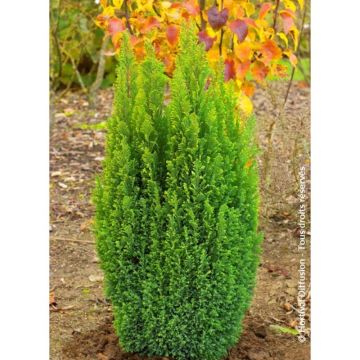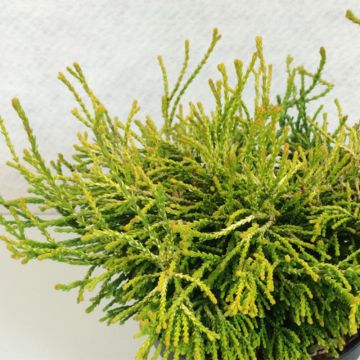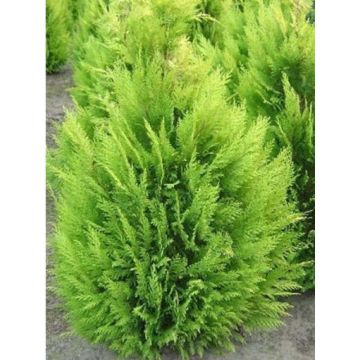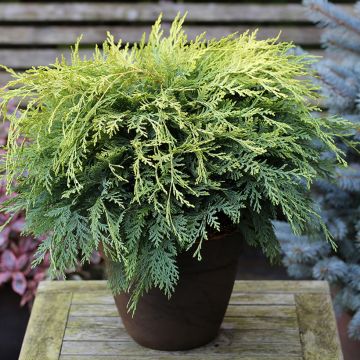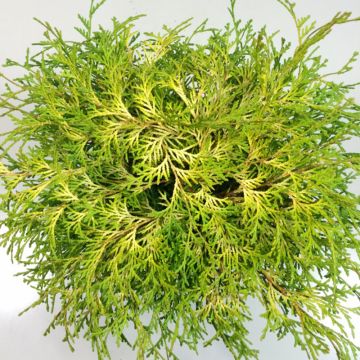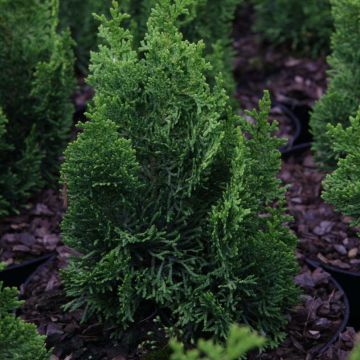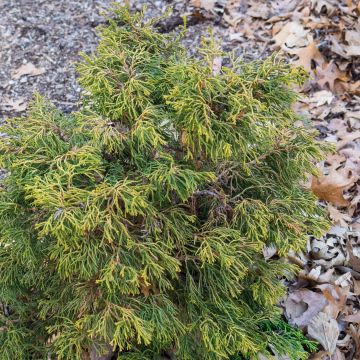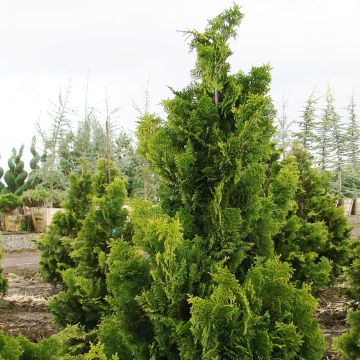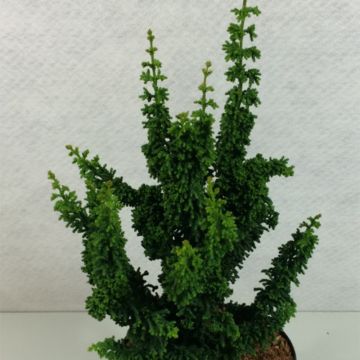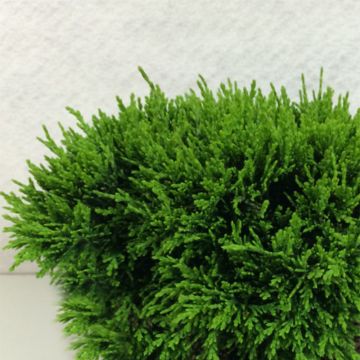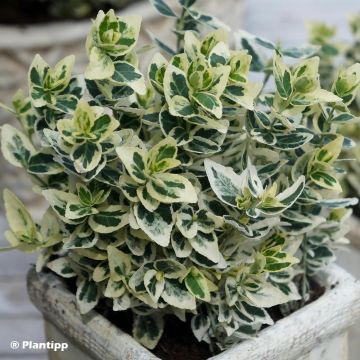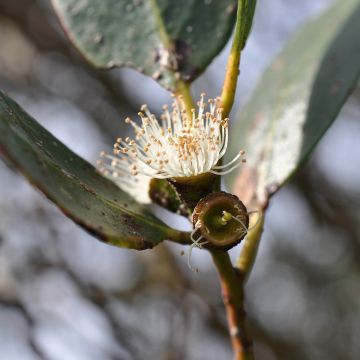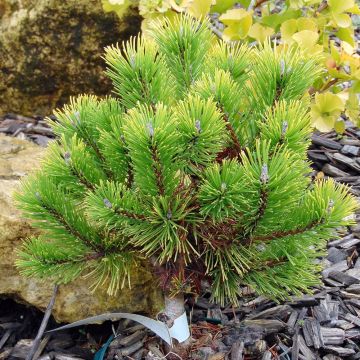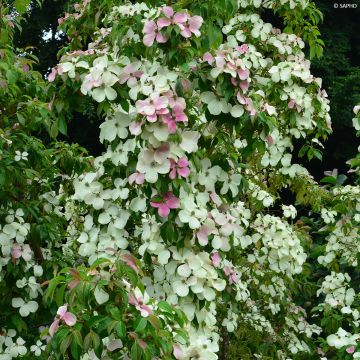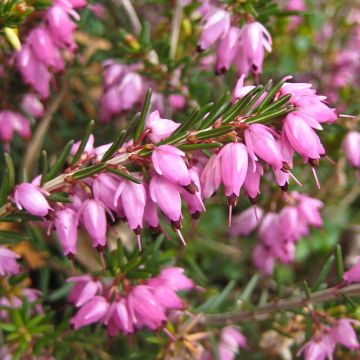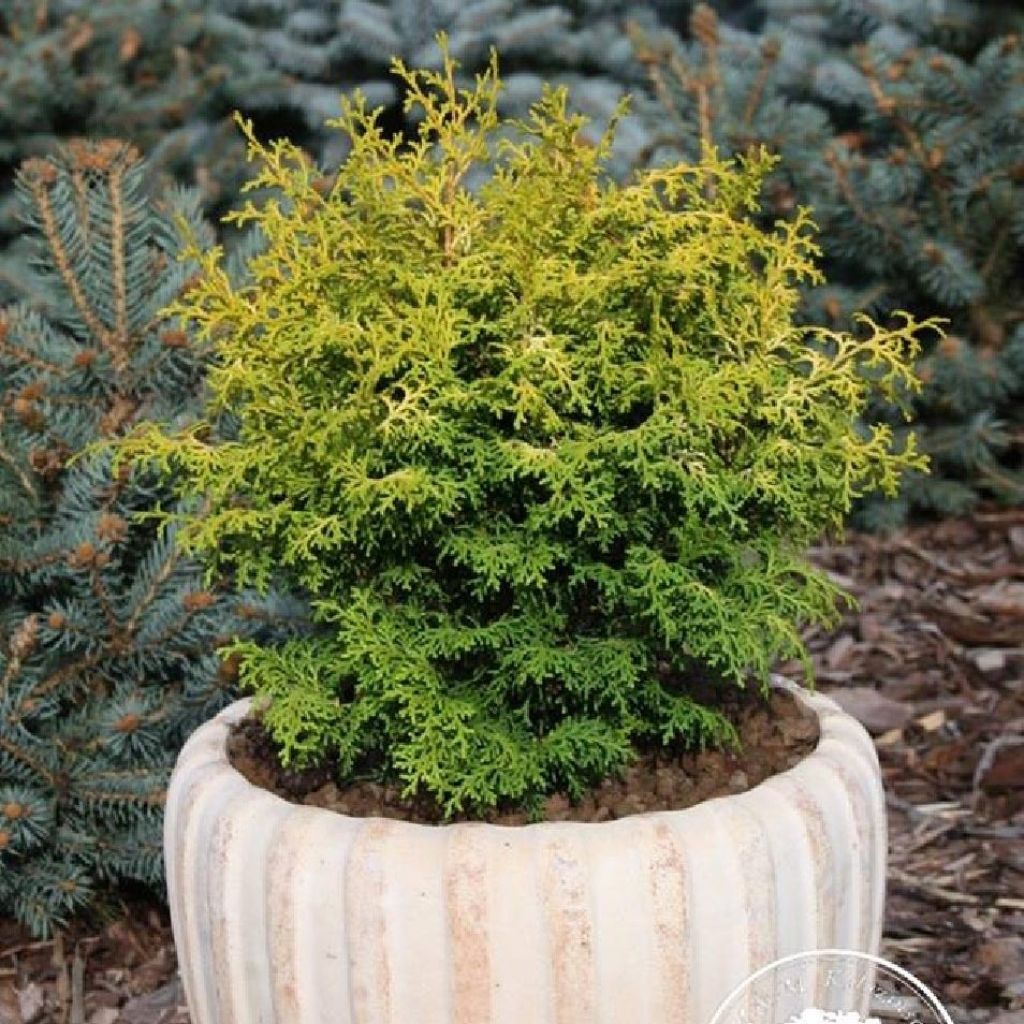

Chamaecyparis obtusa Melody - Hinoki Cypress
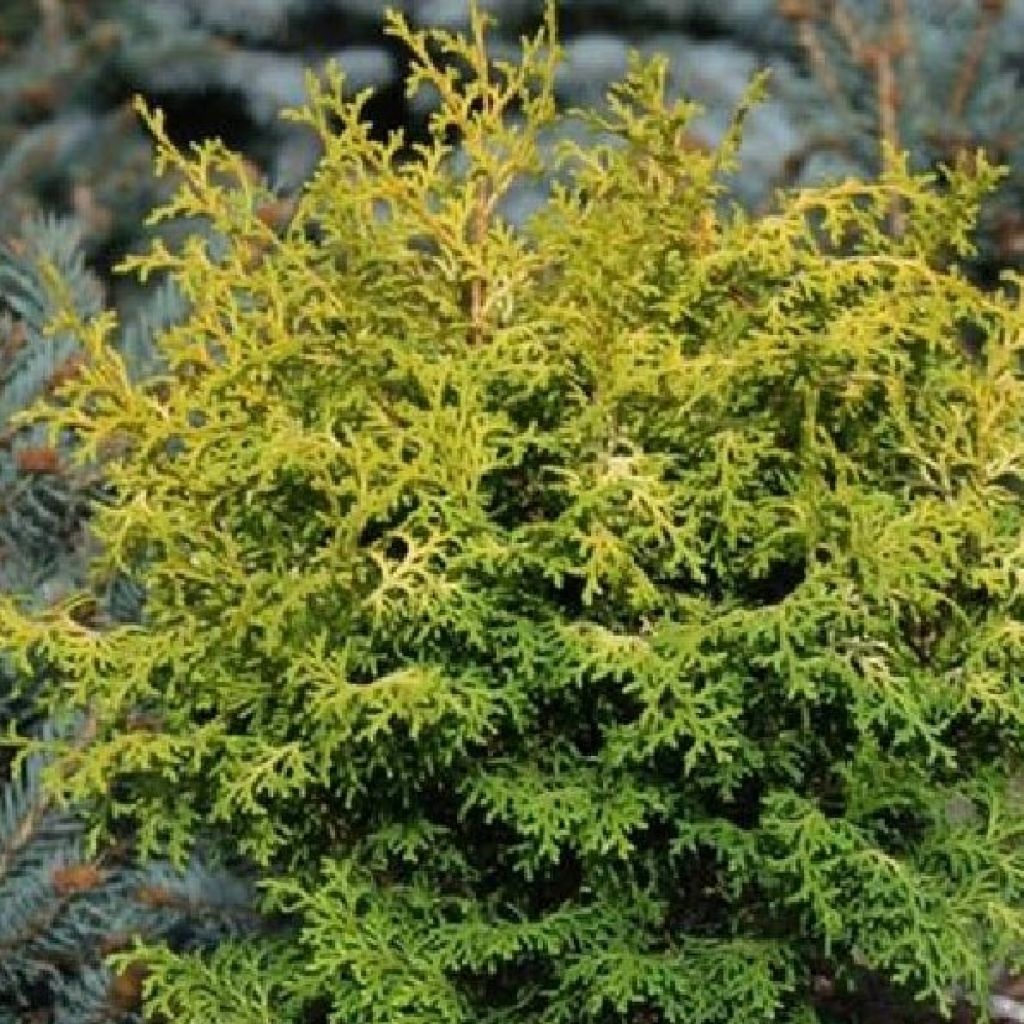

Chamaecyparis obtusa Melody - Hinoki Cypress
Chamaecyparis obtusa Melody - Hinoki Cypress
Chamaecyparis obtusa Melody
Hinoki Cypress, Japanese Cypress, Hinoki False Cypress
Why not try an alternative variety in stock?
View all →Order in the next for dispatch today!
Dispatch by letter from €3.90.
Delivery charge from €5.90 Oversize package delivery charge from €6.90.
Current delivery delay: 2 days.
More information
This item is not available in your country.
Schedule delivery date,
and select date in basket
This plant carries a 24 months recovery warranty
More information
We guarantee the quality of our plants for a full growing cycle, and will replace at our expense any plant that fails to recover under normal climatic and planting conditions.
From €5.90 for pickup delivery and €6.90 for home delivery
Express home delivery from €8.90.
Does this plant fit my garden?
Set up your Plantfit profile →
Description
Chamaecyparis obtusa 'Melody' is a dwarf conifer measuring 1.2 m (3 ft 11 in) in all directions, initially with a conical then rounded habit. It stands out from other cultivars with a gracefully shaped silhouette, thanks to its branches that end in trailing lace and a shiny, two-tone foliage, fluorescent green evolving to creamy yellow at the tips. It is a perfect subject for small gardens, hedges, or to be admired up close when isolated. It will thrive in a rather rich, well-drained, fresh soil and in a sheltered position. As long as there is enough moisture in the soil, this variety resists intense sun very well, unlike other light-coloured foliage plants.
Also known as Hinoki Cypress from Japan and capable of reaching a height of 50 m (164 ft) in its natural environment, the false cypress is mainly used for making lacquered furniture and in the construction of numerous buildings such as palaces. This variety has an uncertain origin, but it is believed to be a mutation of branches from the 'Graciosa' cultivar in the United States. This compact dwarf conifer grows slowly: after 10 years, it will reach a height of 1 m (3 ft 4 in) and a width of 60 cm (23.6 in). Its foliage is even more remarkable as its fringes take on orange-bronze hues in autumn.
Chamaecyparis obtusa 'Melody' is ideal for container cultivation on a terrace, to bring light to the composition of flower beds and hedges, or in small gardens thanks to its slow growth and small size. With its gentle, natural form without pruning, combined with its strong presence, it will work wonders in your rock gardens in a dry garden style or Japanese garden, alongside other conifers, tall grasses, and evergreen shrubs such as azaleas.
This Chamaecyparis is ideal for container cultivation on a terrace or in small gardens thanks to its slow growth and small size. With its gentle and natural form without pruning, it will work wonders in your rock gardens. The true graphic qualities of dwarf conifers naturally impose themselves in the design of a contemporary garden, which prefers the aesthetics of shapes, silhouettes, and textures over the dance of flowering. These plants, with their reassuring permanence, structurally sustain a flower bed, mark pathways and border terraces, easily replacing the strong presence of trimmed boxwood. They serve as a backdrop for small roses, peonies, or tousled grasses with very complementary temperaments. They can also be combined with shrubs or ground cover plants such as aubrietas and cerastiums, as well as flowering shrubs. The key is to play with volumes and colours.
Tips: Water during periods of intense heat as it is susceptible to drought.
Report an error about the product description
Chamaecyparis obtusa Melody - Hinoki Cypress in pictures
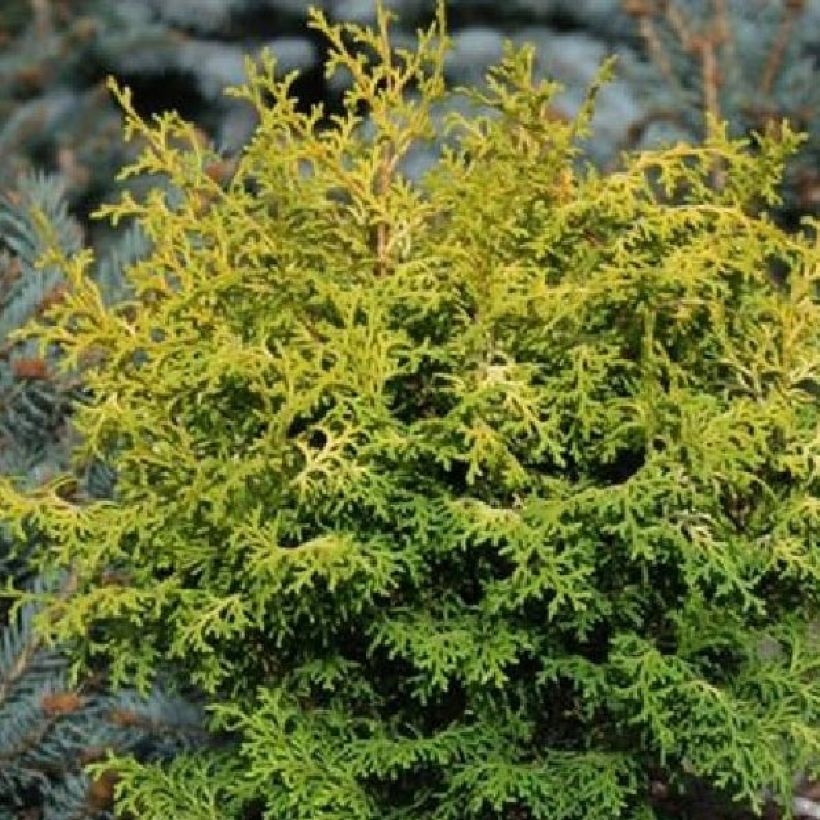

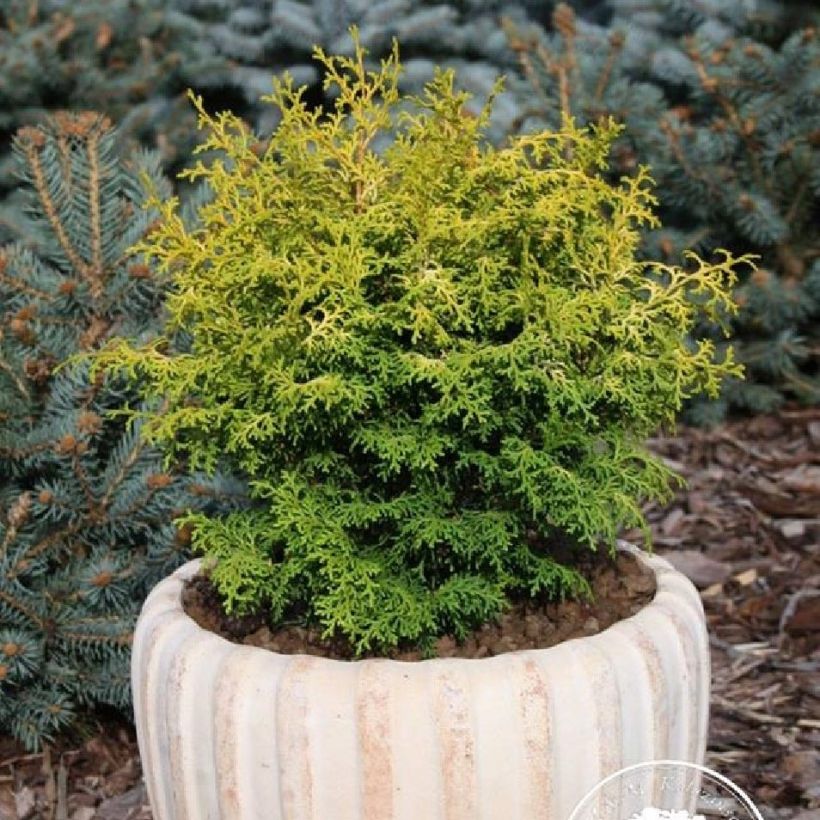

Plant habit
Foliage
Botanical data
Chamaecyparis
obtusa
Melody
Cupressaceae
Hinoki Cypress, Japanese Cypress, Hinoki False Cypress
Cultivar or hybrid
Other Chamaecyparis
Planting and care
Chamaecyparis obtusa 'Melody' is planted from September to November and from February to June in rich, deep and, above all, well-drained, soil. Choose a semi-shaded or gently sunny spot sheltered from prevailing winds. Soak the roots well before planting. Add organic compost when planting and water generously in the first few years. Apply a special conifer fertiliser every year in April and cultivate the soil in summer. It does not require pruning. Plant in intense sun only if the soil remains moist.
Planting period
Intended location
Care
This item has not been reviewed yet - be the first to leave a review about it.
Evergreen shrubs
Haven't found what you were looking for?
Hardiness is the lowest winter temperature a plant can endure without suffering serious damage or even dying. However, hardiness is affected by location (a sheltered area, such as a patio), protection (winter cover) and soil type (hardiness is improved by well-drained soil).

Photo Sharing Terms & Conditions
In order to encourage gardeners to interact and share their experiences, Promesse de fleurs offers various media enabling content to be uploaded onto its Site - in particular via the ‘Photo sharing’ module.
The User agrees to refrain from:
- Posting any content that is illegal, prejudicial, insulting, racist, inciteful to hatred, revisionist, contrary to public decency, that infringes on privacy or on the privacy rights of third parties, in particular the publicity rights of persons and goods, intellectual property rights, or the right to privacy.
- Submitting content on behalf of a third party;
- Impersonate the identity of a third party and/or publish any personal information about a third party;
In general, the User undertakes to refrain from any unethical behaviour.
All Content (in particular text, comments, files, images, photos, videos, creative works, etc.), which may be subject to property or intellectual property rights, image or other private rights, shall remain the property of the User, subject to the limited rights granted by the terms of the licence granted by Promesse de fleurs as stated below. Users are at liberty to publish or not to publish such Content on the Site, notably via the ‘Photo Sharing’ facility, and accept that this Content shall be made public and freely accessible, notably on the Internet.
Users further acknowledge, undertake to have ,and guarantee that they hold all necessary rights and permissions to publish such material on the Site, in particular with regard to the legislation in force pertaining to any privacy, property, intellectual property, image, or contractual rights, or rights of any other nature. By publishing such Content on the Site, Users acknowledge accepting full liability as publishers of the Content within the meaning of the law, and grant Promesse de fleurs, free of charge, an inclusive, worldwide licence for the said Content for the entire duration of its publication, including all reproduction, representation, up/downloading, displaying, performing, transmission, and storage rights.
Users also grant permission for their name to be linked to the Content and accept that this link may not always be made available.
By engaging in posting material, Users consent to their Content becoming automatically accessible on the Internet, in particular on other sites and/or blogs and/or web pages of the Promesse de fleurs site, including in particular social pages and the Promesse de fleurs catalogue.
Users may secure the removal of entrusted content free of charge by issuing a simple request via our contact form.
The flowering period indicated on our website applies to countries and regions located in USDA zone 8 (France, the United Kingdom, Ireland, the Netherlands, etc.)
It will vary according to where you live:
- In zones 9 to 10 (Italy, Spain, Greece, etc.), flowering will occur about 2 to 4 weeks earlier.
- In zones 6 to 7 (Germany, Poland, Slovenia, and lower mountainous regions), flowering will be delayed by 2 to 3 weeks.
- In zone 5 (Central Europe, Scandinavia), blooming will be delayed by 3 to 5 weeks.
In temperate climates, pruning of spring-flowering shrubs (forsythia, spireas, etc.) should be done just after flowering.
Pruning of summer-flowering shrubs (Indian Lilac, Perovskia, etc.) can be done in winter or spring.
In cold regions as well as with frost-sensitive plants, avoid pruning too early when severe frosts may still occur.
The planting period indicated on our website applies to countries and regions located in USDA zone 8 (France, United Kingdom, Ireland, Netherlands).
It will vary according to where you live:
- In Mediterranean zones (Marseille, Madrid, Milan, etc.), autumn and winter are the best planting periods.
- In continental zones (Strasbourg, Munich, Vienna, etc.), delay planting by 2 to 3 weeks in spring and bring it forward by 2 to 4 weeks in autumn.
- In mountainous regions (the Alps, Pyrenees, Carpathians, etc.), it is best to plant in late spring (May-June) or late summer (August-September).
The harvesting period indicated on our website applies to countries and regions in USDA zone 8 (France, England, Ireland, the Netherlands).
In colder areas (Scandinavia, Poland, Austria...) fruit and vegetable harvests are likely to be delayed by 3-4 weeks.
In warmer areas (Italy, Spain, Greece, etc.), harvesting will probably take place earlier, depending on weather conditions.
The sowing periods indicated on our website apply to countries and regions within USDA Zone 8 (France, UK, Ireland, Netherlands).
In colder areas (Scandinavia, Poland, Austria...), delay any outdoor sowing by 3-4 weeks, or sow under glass.
In warmer climes (Italy, Spain, Greece, etc.), bring outdoor sowing forward by a few weeks.


































